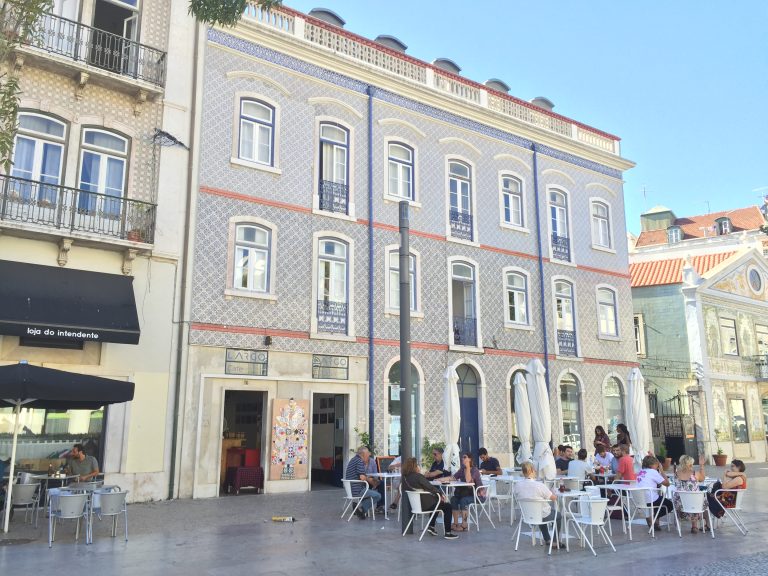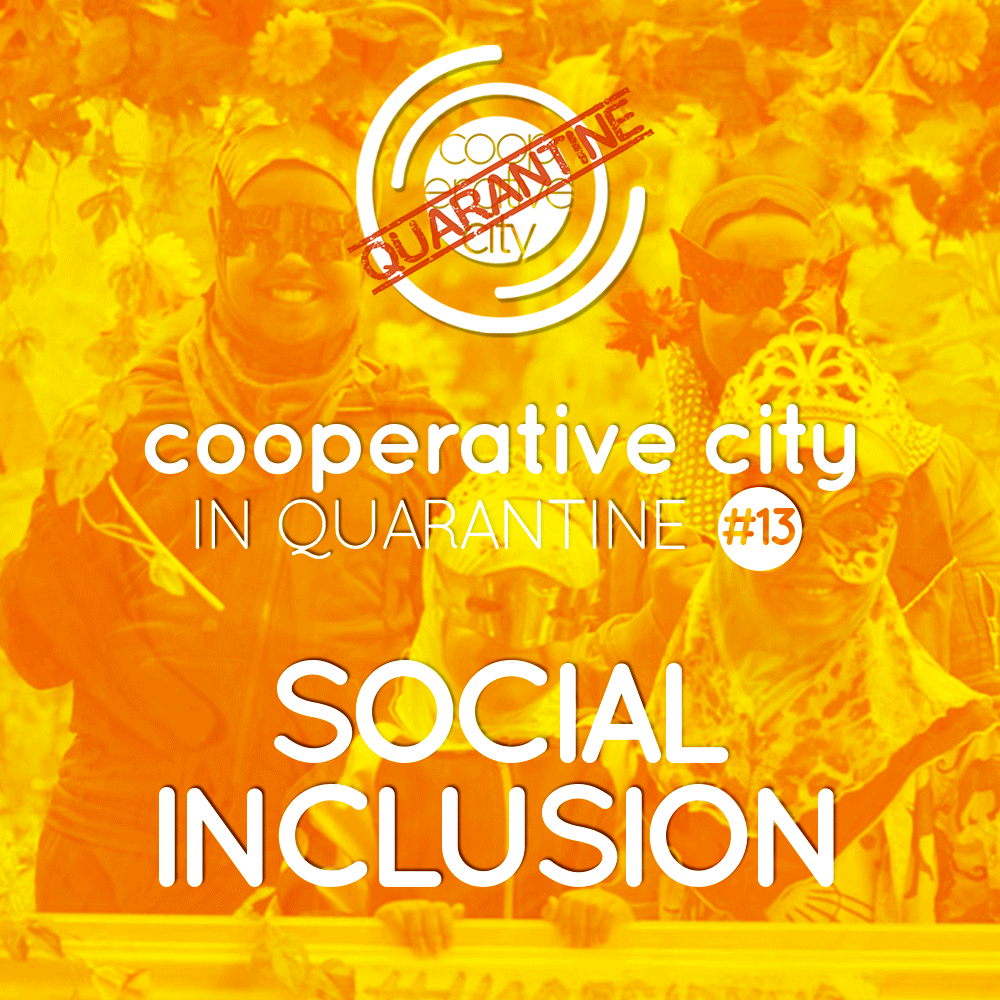The lockdown made the inequalities in our societies boldly visible. The key role of the community and collaborative action to reach the most vulnerable layers of society has become more visible in recent months.
What are the emerging issues that we need to find better solutions to? What kinds of financial support and solidarity structures are needed to truly socially include every member of the society? What are the biggest challenges that more vulnerable citizens are facing, which of these have been radicalised by the crisis, and which of these are new?
Our guests included:
Adam Curtis – Sustainable and social urban development Researcher and Project Manager at Nabolagshager – Oslo, Norway
Rozina Spinnoy – Design Strategist and Social Entrepreneur – Business Improvement Districts – BIDs Belgium – Brussels, Belgium
Rui Franco – Coordinator of the Community-Led Local Development Network (CLLD) – Lisbon, Portugal
Minouche Besters – Urbanist – STIPO Team for Urban Development –
Işın Önol – Curator and Educator – Nesin Art Village
Giulia Maci – Urban Development Expert – Cities Alliance – Brussels, Belgium
Hosted by Daniela Patti and Bahanur Nasya (Eutropian)
Adam Curtis – Social exclusion is present even in the richest countries of the World. Grønland is a central, highly populated district of the city of Oslo that is known for higher poverty rates and unemployment, in addition to lack of public spaces. We are directly working with a high school in this area to tackle these issues, using placemaking as a tool to empower young people. Multifunctional approaches to any problem are the ones that have significant impact. Covid has affected this project as we couldn’t reach as many people as we used to, but our team took to their digital side and this helped us continue with the project, however slowly.
Rozina Spinnoy – This period also magnified the challenges many people with mental health issues are facing. Urban placemaking must be linked to mental health issues, using creativity to make people from neurodiverse backgrounds come together. Outdoor spaces must be built bottom-up, as right now we can see that public outdoor and indoor spaces are in fact designed for exclusion. We got involved with local schools and municipalities to see how we can change and rebuild the urban environment around us. During these difficult times, we are trying to provide online advice on how to stay as safe as possible while of course addressing all the issues that were previously present in our society, including the digital gap. As a society, we need a lot more discussion about inclusion at many different levels, and that must include communities, not only cities and their structure.
CLLD (Lisbon’s Community-Led Local Development network) is an EU-funded governance scheme including over 150 NGOs, private enterprises and the local government. What is happening right now in the city of Lisbon, and how is the CLLD responding to this crisis?
Rui Franco – Urban economy often tends to build or confirm forms of injustice and poverty which go from generation to generation. What we have been facing for the last three months here is that everyone with less stability and no savings tends to suffer way more than average citizens. For instance, a teenager from a wealthy family will not experience issues with e-learning access, while poorer kids will find themselves struggling to even get to participate in classes due to poor internet connection and/or die to the fact that poorer families with more kids may not have the chance to provide devices for all family members. This perpetuates the mechanisms of exclusion of the poorer layers of society. As we have always done, we are targeting the causes of inequality and we are working with the Municipality of Lisbon and with other stakeholders to give everyone the chance to build a decent and happy life.

Despite the digital divide, are there ways to involve the younger generations in a process that can rethink and rebuild the practices for inclusion and socialization?
Minouche Besters – Once we started to work online we realised we had a big opportunity to work with kids a lot more. They were stuck in their homes and were suddenly deprived of their social lives, so we came up with a minecraft environment for the kids in our area. It was a completely new tool that gave kids voice. Staying in touch with them while organizing online gatherings and playtime, they started to create the virtual representation of the world they would like to live in, and we were happy to see that what they wish for is very similar to what we advocate for in terms of public space, accessibility and educational as well as leisure opportunities. We realised that a lack of accessible, public spaces built with the direct participation of the citizenry creates social exclusion and reinforces stereotypes, negatively affecting all aspects of life.
What is being done right now to promote the inclusion of excluded groups?
Rozina Spinnoy – I think the first step should always start from the grassroots level, and then the discussion should go on in cooperation with municipalities. In terms of new, “post-Covid” inclusion policies, unfortunately I don’t see much happening from the side of governments and local governments. For instance, these past months exposed the digital divide, and it was only thanks to bottom-up initiatives that something could be done in this respect, unfortunately without managing to entirely solve the issue.
Giulia Maci – Looking at the global South, in a very short term a lot of funding has been reprogrammed by the EU and other donors towards the support of vulnerable groups. Communications from local communities have been essential for understanding the immediate needs and the long-term aspirations, and in some cases national initiatives did manage to protect the most vulnerable layers of society (e.g.: the suspension of evictions in Uganda). Homeless shelters, shelters for victims of domestic violence and new channels of food distribution are some of the most successful actions we took during this period. I am very happy we finally managed to act quickly and effectively in such a dangerous situation – we were able to establish alliances and to accomplish things that would have required years of work in “normal” times. This is the moment to change the way we plan cities.
Minouche Besters – We should also consider the fact that during a pandemic such as the one we are facing right now disadvantaged groups aren’t only suffering the most, but they also represent a sanitary threat for the rest of society. For example, immigrant factory workers in the Netherlands live in far worse conditions than the average Hollanders. And we as a society are finally starting to realise that overcrowded public transport and factories are indeed a fast track to outbreak. If the living conditions of these people don’t improve, their hardships turn into a health hazard for the whole country. This is when the government suddenly realised that action can be taken. It’s very sad that the issue hadn’t been addressed until now, but at least we finally have a way to go.
Rui Franco – Politically, in Lisbon we started our BIP/ZIP strategy a decade ago. This strategy proved that it is way more efficient to resource bottom-up initiatives than directly acting from higher levels. What is happening now is that our ecosystem is much more organised and efficient. Moreover, communities are making their voices heard, influencing political decisions and contributing to a better distribution of funds for inclusive projects. This strategy has been so successful that we are planning to double the funds this year. The city of Lisbon is very much dependent on tourism, which means that the economic recovery will be very slow. We intend to use our funding to work on building new sustainable models that can diversify the sources of income, so that the most vulnerable groups won’t find themselves isolated. Only by empowering local communities, disadvantaged groups and NGOs can we face a crisis.

What can we learn from this crisis, and how can we transfer these new learnings to students and youth?
Adam Curtis – We primarily work with minority youth. Something we like to think about and be careful of is how we relate to the word “empowerment”. This term can easily be perceived as a way for one group to give power to another group through simple allocation of resources and preset educational tools. This is a paternalistic approach, exactly what we don’t want. Instead, we think of ways to use our privileged access to resources in order to transfer them directly to the target groups, so that they can become their own agents of change. We do a lot of co-creation – the youngsters we work with are driving most of the programs, they tell us what they want to achieve through these activities and how they want to allocate funds. They also try to involve other youngsters in their community, and the results are very encouraging. Disenfranchised groups and minorities are more often than not perceived as communities that aren’t able to speak for themselves. This is not true.
Işın Önol – In the USA, university is an environment where you can easily witness social injustice, discrimination and unequal access to services. Now, during the pandemic, it was very easy to see how students from minority backgrounds were hit much harder than the white population. Of course, this was due to higher rates of poverty and social exclusion, in addition to harsher working conditions and less access to healthcare among people of colour, immigrants, disenfranchised groups and other minorities. For example, I could personally see how many of my students coming from disadvantaged layers of society couldn’t join online courses as they had to immediately find odd jobs in order to sustain their families, whose members fell sick (or even died) due to limited access to healthcare. The situation became so visible that protests soon burst all over the country. Of course, local solidarity initiatives are common sight, however the situation at State level is very complex and the current events clearly show that the present system doesn’t work. So much for what I experience in the USA as an art professor, the quality of art education in Turkey isn’t very good as it lacks funds. At Nesin Art Village, we are doing our best to make education accessible to everybody by building a cooperative community. Those students who can pay for their education do so, and we reuse part of their fees to fund scholarships for those who cannot afford school. Moreover, all professors involved in this project work on a voluntary basis.
Watch the full video


